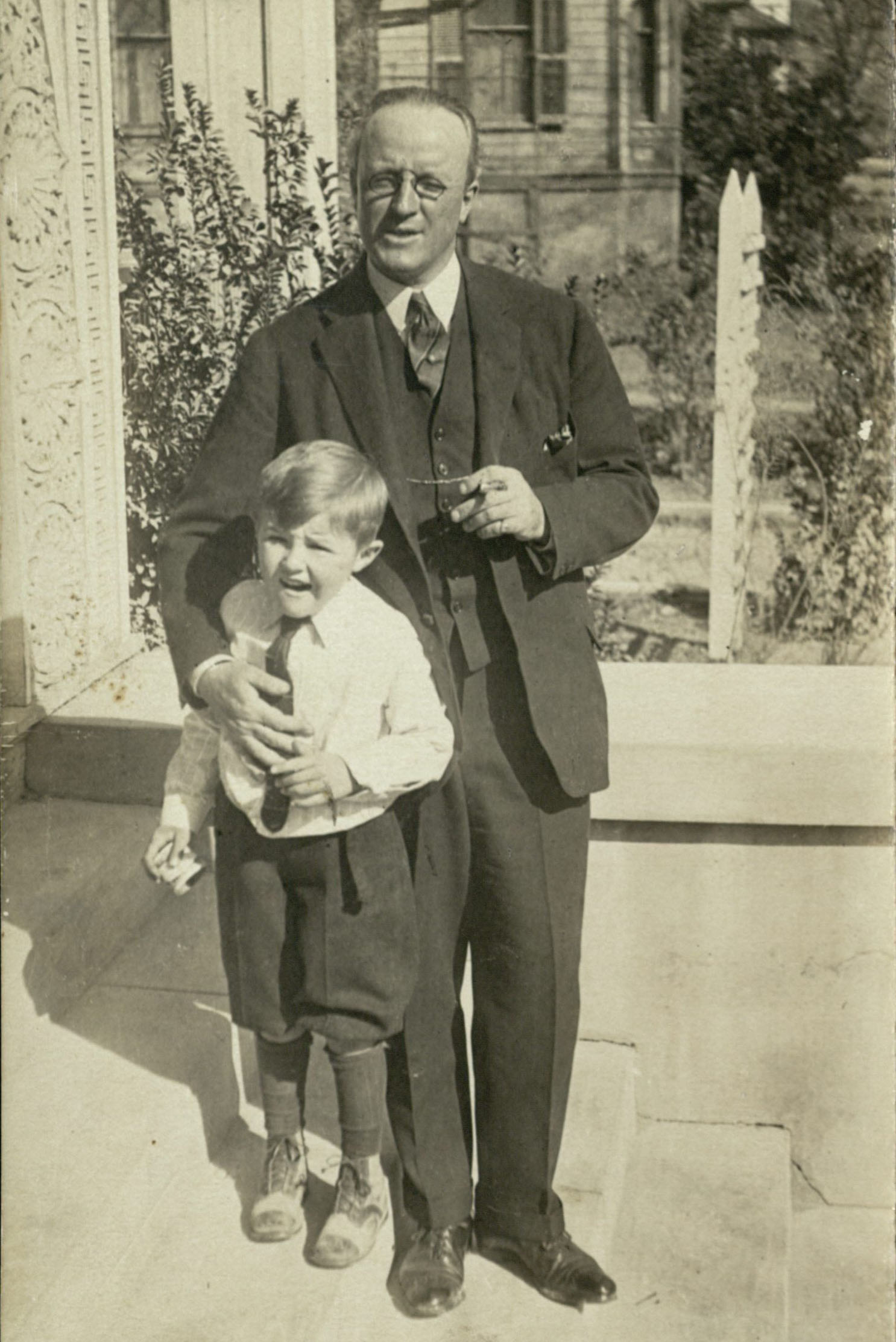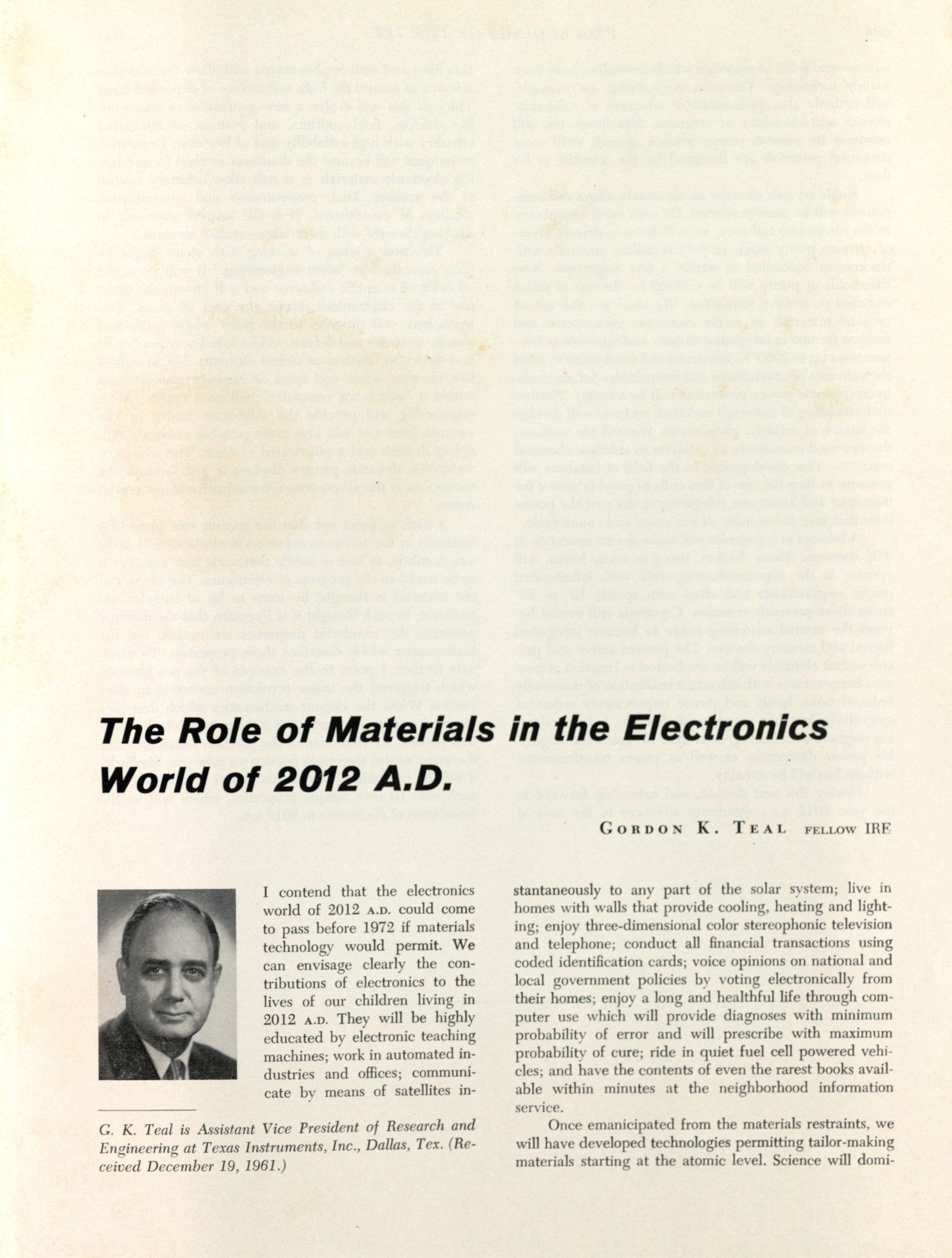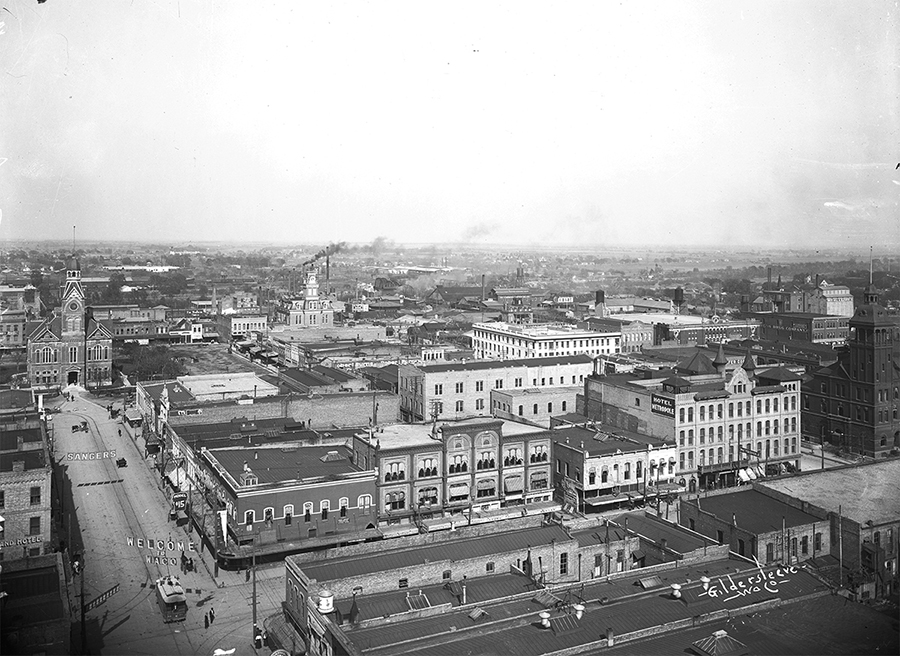This piece by former Texas Collection director Kent Keeth originally was published in The Baylor Line in November 1990. Blogging about Texas periodically features “Looking Back at Baylor” selections, with hopes of sharing Keeth’s work with a new audience.

This past Sunday, Baylor University and the University of Mary Hardin-Baylor rededicated the historic columns on Academy Hill in Independence, Texas, on the grounds of Old Baylor. The event was a celebration of the two universities’ shared past and commitment to preserve their heritage. The columns from the Baylor Female College building are all that remain of Old Baylor now, but what happened immediately after the schools left Independence? Keeth’s essay explores one endeavor on the old campus:
In 1886, after Baylor University had moved to Waco and Baylor College had become Baylor Female College of Belton, the Baptists of Independence were naturally reluctant to be left without the kinds of educational institutions of which they had become so proud. Consequently, the Union Baptist Association attempted to reestablish the former environment by founding Carey Crane Male and Female Colleges on the two deserted campuses. Enrollment remained low, however, and the separate schools for men and women could not be maintained. By 1888 they had been consolidated on the site of the former women’s college, and a few years later the colleges were completely discontinued.
The remaining vacant campus—that of the university—soon developed a somewhat unexpected afterlife of its own. The university’s trustees sold the twice-abandoned land and buildings to T.C. Clay, a local resident who had been a creditor of the university. In turn, Clay conveyed title to the campus to Father Martin Huhn, a Catholic priest, who established an orphanage and school for Negro boys there in January, 1889. The history of that enterprise has been written by Rev. James F. Vanderholt of Port Arthur, editor of The East Texas Catholic, as a part of his study of “The Catholic Experience at Old Washington-on-the-Brazos, Washington County, Texas: The Oldest Black Catholic Community in Texas.”

In 1877 the Diocese of Leavenworth, Kansas had established Holy Epiphany Parish for the black Catholics of that area, and Father Huhn, a native of Prussia, became its pastor. He soon opened an orphanage for Negro boys which he named “Guardian Angels.” It was this institution which he subsequently relocated, together with its orphans, to the former campus of Baylor University in Independence.
The priest was a rough-hewn individual who apparently relied less upon managerial skills than upon the philosophy that most difficulties would eventually resolve themselves. Contemporaries describe his appearance as resembling that of a farmer more than a clergyman: his beard was so long that it hid his clerical collar, and his clothing was “rustic.” He was also prone to impulsive or eccentric acts, such as his purchase of an automobile at a time when he could ill afford it, and despite the fact that he had never driven.
Although Father Huhn was “regular in his spiritual duties,…his financial management of the orphanage was so questionable that the Bishop of Leavenworth appointed a committee of priests to investigate his operation.” Thus, it was probably a relief to all concerned when he announced his intention to remove himself and his orphanage to Texas.

Records of the orphanage are virtually nonexistent and even an extensive dig on the former campus by Baylor archaeologists failed to turn up any hard evidence about its operations or daily life. Rev. Vanderholt speculates that “when the original orphans grew up and moved out, few replaced them.” An 1891 Catholic Directory indicates the presence of thirty-five boys at the orphanage, but their number diminished progressively until, seven years later, none at all were listed. The institution, first known as the “Guardian Angels Industrial School,” gradually became less an orphanage than a parish called the “Church of the Guardian Angel.” Father Huhn himself was the sole staff member of record.
By the time of his death in 1915, the priest owned not only the seventy-five-acre campus itself, but also about a hundred acres of surrounding farm land. Still, “he never seemed to have the cash to take care of the normal affairs and management of the orphanage. The stone buildings of old Baylor began to decay.” His own living quarters were described by a visitor as “quite deplorable” and, perhaps as a result of their shortcomings, Father Huhn became fatally ill with rheumatism.
Shortly before his death, Father Huhn transferred all of his property to his sister. Thus, the land that had been identified with Baptists for forty years, and had subsequently seen a further quarter-century in the service of the Catholic Church, returned once more to private ownership. As its buildings collapsed or were razed for reuse of their materials, the former campus gradually became, as it remains today, virtually indistinguishable from the surrounding fields and farms of Washington County.
Although Keeth calls the former campus “indistinguishable” from the surrounding fields in 1990, Baylor has long been active in its efforts to remain in touch with its town of origin. From Independence homecoming celebrations to past restoration projects to Line Camp, Baylor has worked hard to honor its early history. The images in this post come from our Flickr set on Baylor’s presence at Old Baylor, which you also can see in the slideshow below. Due to lack of records, we do not know whether the Guardian Angels orphanage used the Baylor Female College building or if they used other Baylor structures.

























